Street food in pre-revolutionary Russia: what did our ancestors eat "on the go"?
Categories: Food and Drinks | History | Nations
By Pictolic https://pictolic.com/article/street-food-in-pre-revolutionary-russia-what-did-our-ancestors-eat-on-the-go.htmlToday, those who want to have a quick snack on the street can treat themselves to not too refined, but a variety of dishes. In kiosks and pavilions you can buy shawarma, pizza, burgers, French fries, hot dog and much more. And what could passers-by count on in tsarist Russia, where no one had heard of shawarma, and they could beat up for an incomprehensible word pizza?
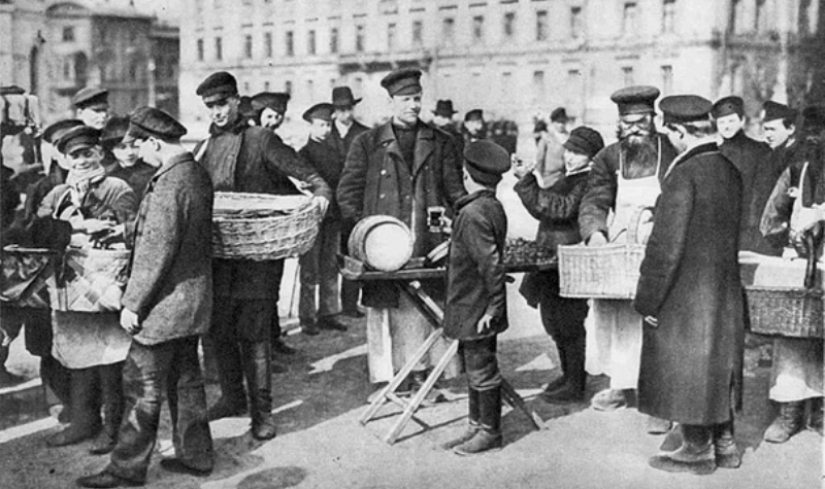
In pre-revolutionary Russia, street food was sold in large cities. In the provinces, such a business was not particularly profitable and there they often had a snack in taverns. But in provincial cities and the capital, it was possible to eat "on the go" at fairs, at train stations and near large pubs.
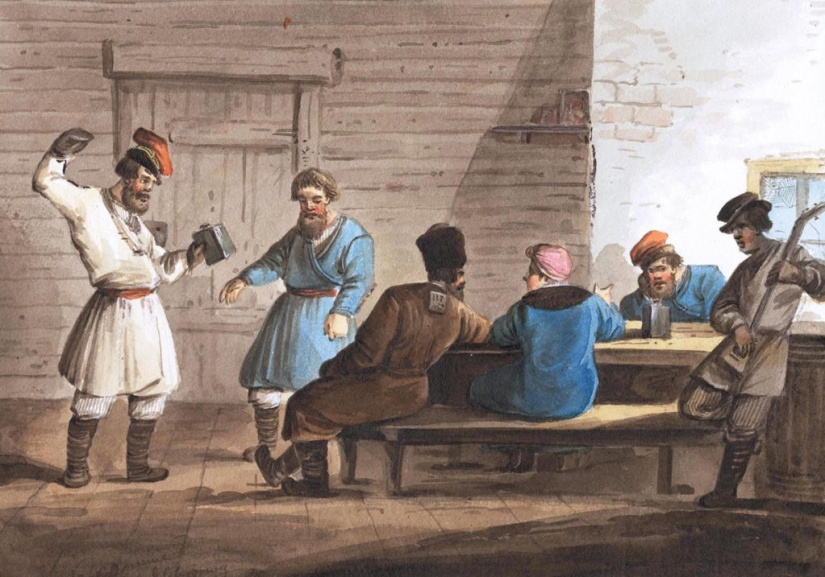
In Moscow, street food began to be sold in an organized manner since 1552. Then Tsar Ivan the Terrible ordered to open the first tavern on Balchuga. In the drinking establishment itself, food was not offered, but only alcohol was poured. But near the entrance, vendors of various food began to gather. They set up long tables on which they laid out pies, fried and boiled meat, pancakes and other simple snacks.
The street food had to be fresh and hot. Therefore, merchants put dishes on pots and braziers with coals. Not only the guests of the pub had a snack at these tables, but also just passers-by. Gradually, the business developed and by the 18th century, selling food in crowded places became the most common thing.
In large cities, it was possible to eat on the central streets and squares, markets and even on bridges. The height of the trade was in winter, when many people bought a hot pie and a mug of sbitnya to keep warm. The street food was varied and appetizing. Everyone could choose something to their taste and wallet. But the greatest demand has always been for rolls.
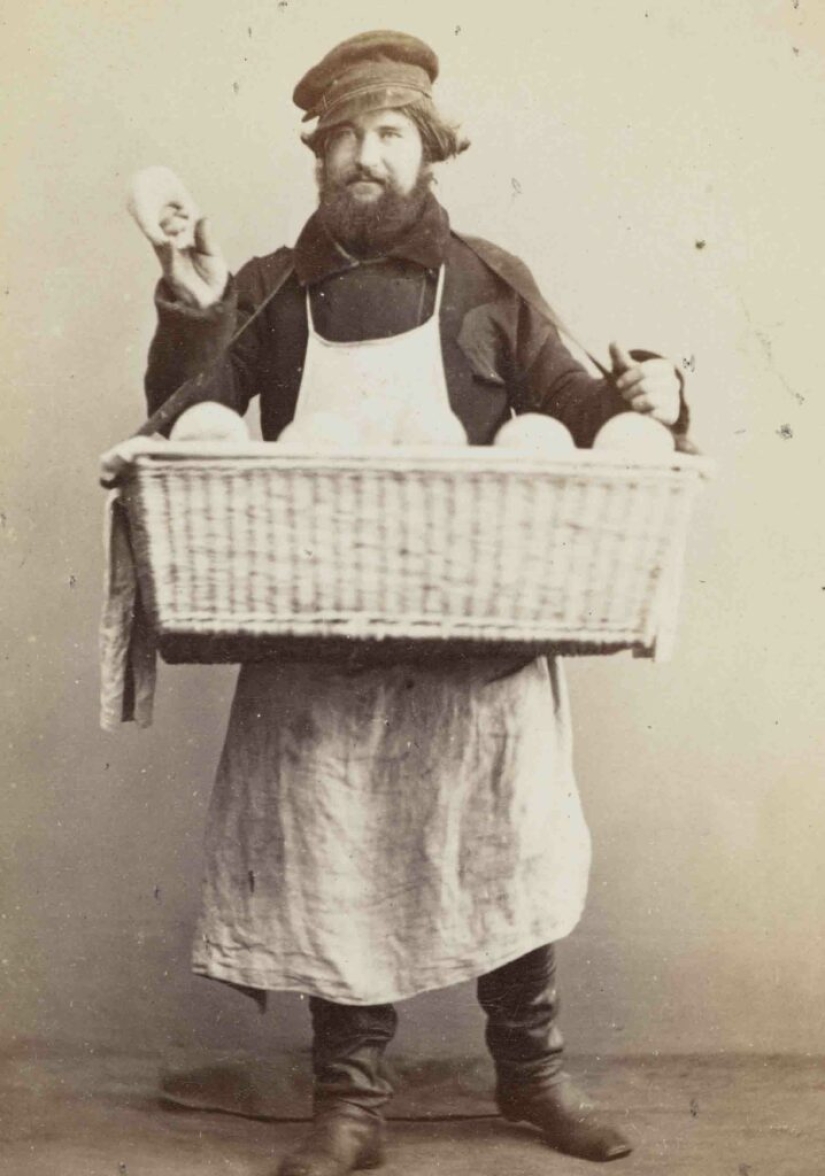
They were baked in the form of a padlock, and a bakery product was supposed to be held by the shackle. This was done so as not to touch the roll itself with hands that were not always clean. The shackle was usually thrown away, and it became the prey of not squeamish beggars. Hence the expression "to reach the handle", that is, to descend completely.
There were also saiki in the top of street dishes. Oblong buns made of pastry with raisins were especially loved by children. Buckwheat, which looked like cones or pyramids made of buckwheat flour, were also in demand. They were cut into pieces and smeared with butter or sprinkled with spices.
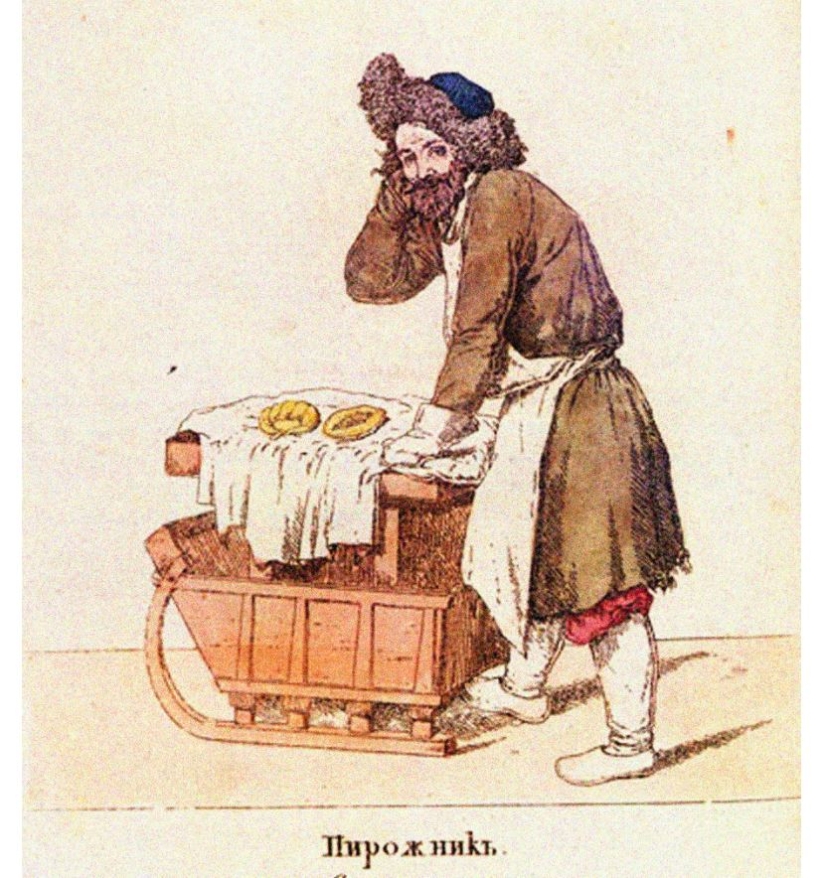
As for the pies, their choice was huge. They were baked with meat, fish, mushrooms, eggs, cabbage and various combinations of these fillings. They also sold hearth pies — lush and fragrant. They were cooked "on the hearth" — in a niche located under the stove.
In the 19th century, substantial dishes were added to the assortment of street food, with which you could have a full lunch. Merchants offered passers-by porridge with meat and even cabbage soup. Food was served from large containers, which were wrapped in rags to keep the food hot. Customers were poured portions into wooden or clay bowls and provided with a wooden spoon.
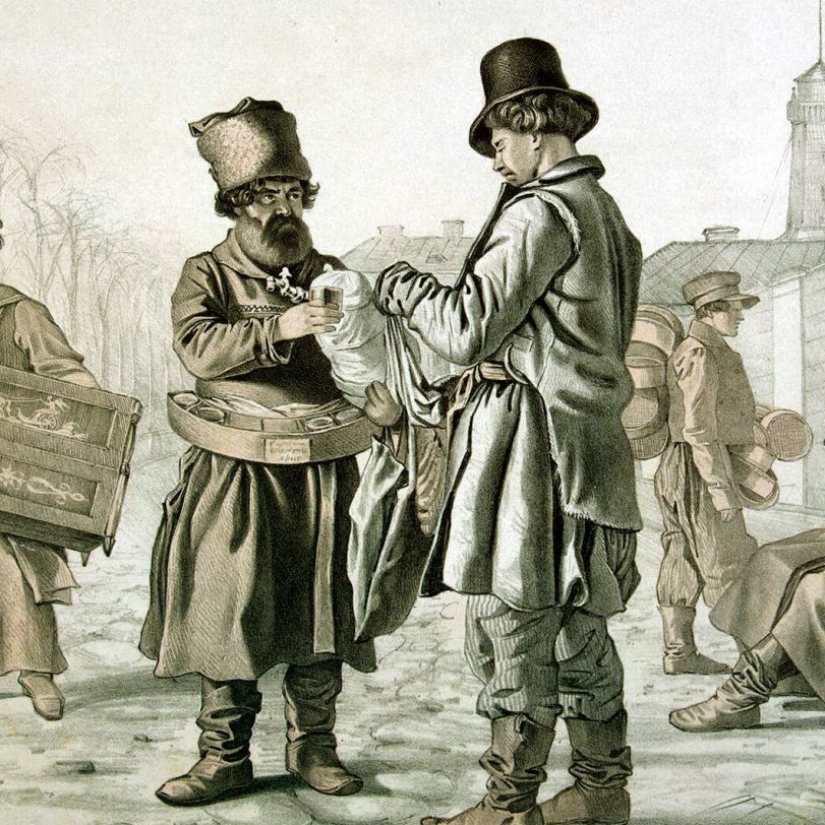
In the cold season, the most popular drink was hot sbiten on honey. In the summer, they bought bread kvass or cold cranberry juice. An analogue of modern cola could be considered wort — a sickly-sweet drink made from bran, malt and rye flour.
After the revolution, street trade declined. The people became impoverished, and the merchants were ranked among the bourgeois. But later the state took everything into its own hands and Soviet fast food was born, which some still remember with nostalgia.
Recent articles

There is never enough space in a child's room. You know, you need a bed, the closet is literally bursting with things, and you ...

Armenian artist Artush Voskanyan paints in the style of mannerism and calls the Italian painter of the XVI century Giuseppe ...

In our days, the friendship with the ex-partners is normal, civilized and progressive. In this article we are told in journals and ...